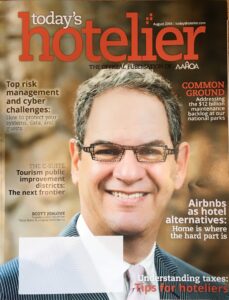 Tourism Public Improvement Districts: The next frontier
Tourism Public Improvement Districts: The next frontier
excerpt from Today’s Hotelier, August 2018
For many years, hoteliers across the country have fought to keep local hotel occupancy taxes low and to ensure that the hotel occupancy taxes are only used for the purposes outlined under state law. However, achieving success in either of these areas is not easy.
Historic Challenges: Communities are increasingly seeking to raise local hotel occupancy taxes to their maximum levels in order to generate new local revenue. These tax increases can often be accomplished simply through a majority vote of a city council and/or a local election ballot item on the issue.
In both cases, local hotel occupancy tax increases are almost uniformly approved, because they hold the distinction of being one of the only taxes that can be approved by voters who get the local benefit but are not the taxpayers who foot the bill. Instead, it is the hotel guests and the hotel industry who have to collect and absorb this tax burden.
And to make matters more challenging, many communities collecting city and/or county hotel taxes spend relatively little of their local hotel taxes to directly promote hotel activity. Instead, they are spending this revenue increasingly on city general fund programs that have little to no direct impact on the hotel and tourism industry.
What can the hotel industry do? In California, Texas, and a cadre of other states, hoteliers are banding together to create Tourism Public Improvement Districts (TPIDs), also known as Tourism Improvement Districts (TIDs).
These districts generally require a petition to be signed by a majority of the hoteliers within the district, as well as approval of the district’s creation by the local government for that area.
What is the difference between these tourism districts and other entities overseeing local hotel taxes? Tourism Public Improvement Districts are generally controlled by a board of directors that is solely composed of area hoteliers.
Read more from Scott’s article in Today’s Hotelier, August 2018.

